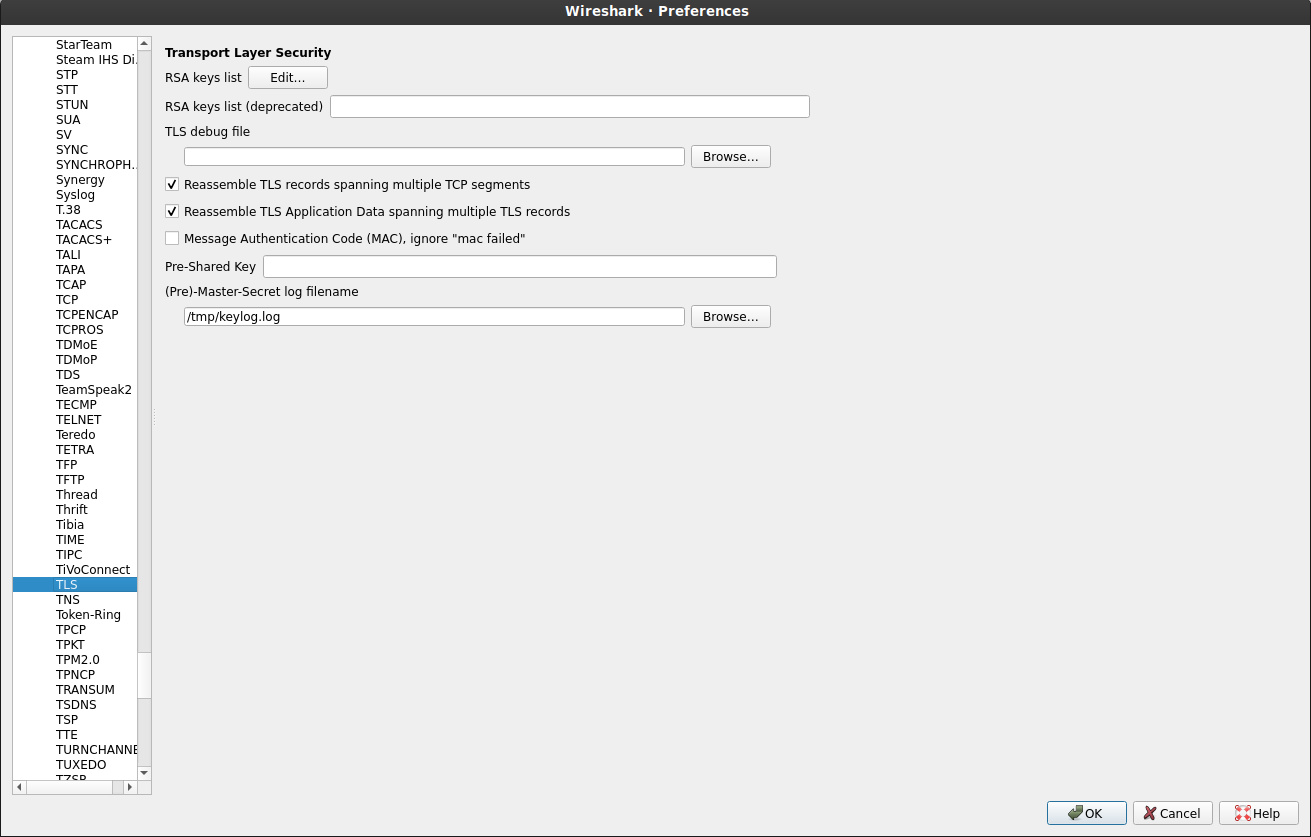

- #Wireshark tls 1.2 decrypt how to#
- #Wireshark tls 1.2 decrypt manual#
- #Wireshark tls 1.2 decrypt code#
#Wireshark tls 1.2 decrypt manual#
Manual decryption Everything starts with a handshake Let’s now forget about this Wireshark feature and decrypt the. After closing the window, Wireshark will decrypt the TLS frames and you could happily find out what the client saw. It reveals a lot of information about Wireshark decryption process and helped me several times when I was struggling with my own decryption tools. Another interesting option in the SSL preferences dialog is the Wireshark SSL debug file which you may save to a text file. My sample server had address 172.28.128.3 and my key file was saved in the ( ) format. Click on the Edit button marked on the image and you should see a dialog similar to the one below (wit your own key definitions of course): You just need to go to Edit -> Preferences and in the dialog that appears select SSL protocol as on the image below:Īs we have the private RSA key we need to add it to the Wireshark RSA key list. Wireshark has a fantastic feature which can decrypt the.
#Wireshark tls 1.2 decrypt how to#
This post is not a guidance on how to create a secure TLS configuration, but a walk-through on how this protocol works and I will purposely use less secure ciphers to make things easier to explain. My main point in writing this post is to present you the steps of the TLS communication. Finally the client was using a slightly outdated browser which supports TLS 1.0 (though I will inform you what would have been different if it had been TLS 1.2) and does not use ephemeral keys. Let’s then assume that your server has a certificate with a public RSA key and you are in possession of its private key. The client forgot to copy the error message but luckily had a Wireshark instance running in the background (I know it’s highly hypothetical, but just close your eyes to that :)) and he/she sent you the collected traces.
#Wireshark tls 1.2 decrypt code#
pcap file recorded by one of your company clients who complains that your application returned 500 HTTP status code with a strange error message. Today I would like to show you the steps required to decrypt a sample HTTPS request. I wanted to know what makes it secure and how the communication actually looks like. Mux.HandleFunc("/", func(w http.ResponseWriter, req *http.Recently I have spent some time on learning the internals of HTTPS.

Per golang tls code keyLogLabelTLS12 = "CLIENT_RANDOM"

The root cause is the difference between tls1.2 and tls1.3, the difference could be found here Am I doing something wrong or missing something? I examined the file, and I see that it contains CLIENT_HANDSHAKE_TRAFFIC_SECRET, SERVER_HANDSHAKE_TRAFFIC_SECRET, CLIENT_TRAFFIC_SECRET_0, and SERVER_TRAFFIC_SECRET_0 lines, but not the crucial CLIENT_RANDOM lines. This works, and various stuff is written to the specified file, but providing that file to Wireshark doesn't enable TLS decryption. W, err := os.OpenFile("tls-secrets.txt", os.O_WRONLY|os.O_CREATE|os.O_TRUNC, 0600) The following two lines open a file in the current directory and configure the application to dump its TLS secrets there TlsCfg.ClientAuth = tls.RequestClientCert If a.cfg.Options().InsecureAllowOldTLSVersions I read the Wireshark TLS documentation Syncthing is written in Go, so I patched it to export TLS secrets, like this (this is just Syncthing upstream code with the addition of the two final lines): // The TLS configuration is used for both the listening socket and outgoing Since most of the Syncthing protocols are encapsulated in TLS, I need to provide the TLS secrets to Wireshark. I'm working on a Wireshark Syncthing dissector.

I'm not totally sure whether this is really a Wireshark, Go, or Syncthing question I tried the Wireshark dev list and the Go dev list but got no response, so I figured I'll try here:


 0 kommentar(er)
0 kommentar(er)
